Toys in front yard, cousin’s warning ignored
Take-down team did not arrest target of raid when he left house earlier
Testimony raises questions about Blake killing
June 8, 2013
By Diane Bukowski
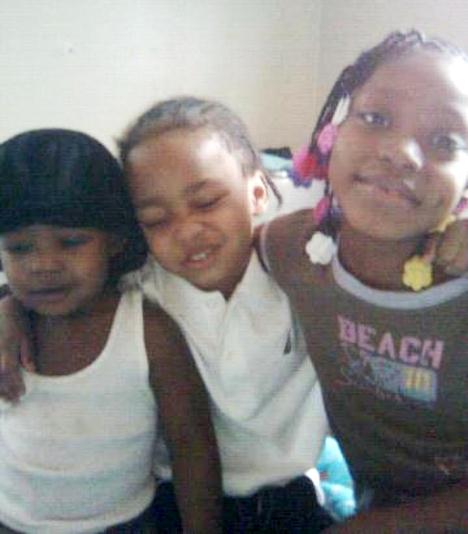
Aiyana Jones and her three little brothers were sleeping at their grandmother’s home when police raided, killing her with a shot to the head from an MP5 machine gun.
DETROIT – Testimony continued June 5 and 6 in the trial of Detroit police officer Joseph Weekley, charged with involuntary manslaughter and reckless use of a firearm resulting in the death of Aiyana Stanley-Jones, 7, in 2010. Once again, both Prosecutor Robert Moran and Weekley’s defense attorney Steve Fishman ignored the central issue in the case—the military use of police against poor Black Detroiters, which was bound eventually to result in such a tragedy.
At one point, Special Response Team (SRT) Sgt. Tim “Malibu” Dollinger called the post-midnight raid on the Jones home, where four little children were sleeping, a “mission.” The term recalled civilian killings by U.S. military forces in Iraq and Afghanistan.
Aiyana’s cousins Mark Robinson and Vincent Ellis and her aunt LaKrystal Sanders took the stand to describe the horrific raid. Her grandmother Mertilla Jones, who was sleeping on the couch with Aiyana when Weekley shot the child through the head using an MP5 submachine gun, is set to testify Mon. June 10.
It is likely that Fishman will grill her about his primary defense of Weekley, that she bumped into his gun or otherwise interfered with him. Most raid team members so far have testified that when they entered the home, Mertilla Jones was on the far end of the couch, a significant distance away from Weekley.
On June 5, Robinson, 22, said he had gone outside to get his two puppies back into their pen after Ellis woke him shortly after midnight June 16, 2010.
“I turned around and I see like a big metal tank truck with lights all over it, and officers get out dressed in black,” Robinson said. “They come up to me and had guns in my face, made me get on the ground, and put a big foot in my back. Next thing I see cops running up to the house. I was yelling to them, ‘There’s kids in the house.’ They ignored me. They continued to bum rush the house. They threw the flash bang through the window and it went off with a boom. Then I heard a sound like a gunshot.”

- Aiyana’s family members during Fieger press conference May 18, 2010. L to r, Mark Robinson, Dominika Stanley, Charles Jones, Fieger, Mertilla Jones and LaKrystal Sanders. Photo by Diane Bukowski
His voice trembling, Robinson continued, “At that moment, I hear my auntie screaming, ‘You killed my baby, you killed Aiyana.’ Then one cop ran out of the house with Aiyana over his arm, carrying her like a rag, with her head slumped one way and her feet the other way.”
He said afterwards he saw the police bring his aunt, Mertilla Jones, out of the house in handcuffs and take her away in in a police car.
The officer who carried the child out, according to police testimony, was Kata’Ante Taylor. He executed 18-year-old Artrell Dickerson with two gunshots to the back as he lay on the ground in 2008, according to eyewitnesses. Dickerson’s family won a $1.5 million settlement against the City of Detroit in that case.
On cross-exam, Fishman grilled Robinson on his testimony that he heard the gunshot come from the porch. Robinson clarified, “It came from on the porch in the doorway.”
Fishman asked whether Robinson knew and told family members that Chauncey Owens, who lived in the upstairs flat with LaKrystal Sanders, was involved in the killing of Je’Rean Blake, 17, on May 14, 2010, the motive for the raid.
Robinson said he suspected Owens or Owens’ brother Sherron Heard, known as “Chinaman,” might have been involved because they had a moped, cited in TV reports as present at the scene of the Motor City Marketplace liquor store where Blake died.
But, he said, he did not know if that was the case and never told others in the family of his thoughts. He said the killing did not fit Owens’ personality.
“It was not my place to ask him,” he said. He testified he had never seen Owens with a gun. Earlier, police testified that no weapons were found in the house after Aiyana was killed.
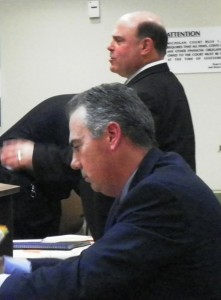
Prosecutor Robert Moran (seated) at preliminary exam of Aiyana’s father Charles Jones as Jones’ attorney Leon Weiss speaks, Jan. 26, 2012. Photo by Diane Bukowski
Moran is also prosecuting Owens and Aiyana’s father Charles Jones in the Blake case in what many have called a conflict of interest. Both he and Fishman elicited testimony from police officers that they “heard” Owens had a handgun and an AK 47. However, the officers never specified who gave them the information or whether they had seen the weapons.
Neither Wayne County Circuit Court Judge Cynthia Gray Hathaway, who is hearing the case, nor the prosecution has objected to such presentation of “facts not in evidence,” although Hathaway at one point objected to “hearsay” but did not rule it out.
Police on the stand and in an A & E videotape have said but not substantiated that Lillibridge, the street where the Jones family lived, was a hot-bed of drug dealing, and that Owens dealt drugs. They appear to be playing to the sentiments of the jury, which is all-white except for one Black member.
Owens has no drug-related convictions on his record.
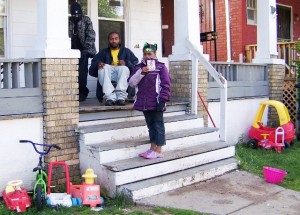
Toys in front yard of Aiyana’s home in photo taken May 16, 2010 are the same ones seen in evidence photo shown to police and jury in Weekley trial. Photo by Diane Bukowski.
Likewise, Judge Hathaway has not challenged Moran and Fishman’s continued characterization of Owens as a “murderer,” although he has not yet been tried in Blake’s death, and has no other murder-related convictions on his record.
No arrest warrant was issued for Owens until May 19, 2010, three days after the raid, according to court records. Instead, officers testified, they obtained a “search warrant” for the two-family flat where the Jones family lived downstairs, running it to 36th District Court Magistrate Sidney Barthwell’s home for a signature just prior to the raid.
Barthwell arraigned Maryanne Godboldo nearly a year after Aiyana’s death, after she stood off a similar SRT raid by police who were trying to take her daughter Ariana to medicate her with a dangerous drug in March, 2011. He ordered Godboldo held on a half-million dollar bond, until an outpouring of national support forced her release on personal bond. Later, 36th District Court Judge Ronald Giles dismissed all charges against Godboldo.
An SRT officer testified he led a trio of officers in a “take-down team,” which was supposed to arrest Owens if he left the house. He said they were parked on Montclair near Mack, three streets west of Lillibridge, when surveillance officers Raymond Trammell radioed he saw Owens leave the home twice, three hours before the raid, and walk with another man north to the end of the block at E. Canfield, then back to the house. He said his team did not arrest him during what amounted to two four-minute walks because he had not crossed E. Canfield and they could not “cut him off.”
Many community members have contended the SRT team wanted to put on a show with their military gear for the A & E TV cameras, which had been following the investigation all day, by raiding the house instead.
After ignoring them during the first days of testimony, Moran finally pointed out the numerous brightly-colored toys in the family’s front yard, which are clearly visible in an evidence technician’s photo of the home, shown repeatedly to officers and the jury. All the officers denied seeing the toys during extensive surveillance before the raid.
SRT Sergeant Tim “Malibu” Dollinger, who along with Weekley, nicknamed “Brain,” is featured as a star on A & E’s “Detroit SWAT” website, was in charge of the raid team.
After testifying extensively about the line-up of the SRT raid team as it entered the house, and the gear they wore, Dollinger said he was the third or fourth officer inside the home, and immediately saw an entry bullet wound in Aiyana’s head.
He said he directed Officer Taylor to take her out, and continued to search the home on all three levels.
He testified that he drove by the house beforehand with Weekley and another SRT officer. He denied seeing the toys, and said knowing that children were present would not have changed the team’s plan.
“Is the fact there are children in the house, does that mean a murder suspect can sit around with children for the next 10 years and the police will never come get them?” Fishman asked.
“If someone says, ‘Hey be careful there’s kids in there,’ I’m not going to stop and not execute the search warrant,” Dollinger said. “Not that you wouldn’t be careful, it’s important to know so no one gets hurt. You’re already giving them a lot of trauma because there’s a lot going on.”
He testified that he and Weekley had participated in at least 250 search warrant raids and about 50 “barricaded gunman” raids. He said SRT officers get a “patch” for their uniforms for each raid.
Dollinger said he was born and raised in Detroit by his grandparents, and that he and his grandfather were both victims of robberies. He said that motivated him to become a policeman. Dollinger currently lives in New Baltimore, Michigan, according to an on-line records search.
Aiyana’s aunt LaKrystal Sanders, who lived with Chauncey Owens for 17 years at various residences, also testified June 6. Sanders said she and Owens heard the loud noises and came down from the upper flat as police were breaking down their door. Police arrested Owens, who was in his boxer shorts, and took him into the lower flat, she said.
That action further contaminated what officers earlier testified had become a homicide scene, which needed to be investigated by the unit that deals with officer-related shootings. Owens’ court records in the case show that officers forced him to sit on the bloody couch where Aiyana had been shot, prior to taking him to jail and then making her mother, father and grandmother sit there as well, “for hours.”
“I heard my mother screaming, ‘They killed Aiyana,’ Sanders said. “She was screaming my name. . . .I asked a sergeant did they let my brother go to hospital. I heard on the police radio different things, including that she was doing all right, or going into surgery, or had an asthma attack, or got burned. . . After a few hours, someone told me ‘I’m sorry for your loss.’”
Her testimony cast doubt on the prosecution’s case against Owens.
Fishman quoted testimony she gave to a grand jury regarding the day Blake was killed.
“You told the grand jury, all of you were sitting outside on the front porch that day and saw Chinaman [nickname for Owens’ brother] fly by. He told you I gotta get rid of this bike and gun. You said Shannon, Lebron, all the kids, you, Charles Jones, Dominique Simpson, McKenzie Robinson, were there.”
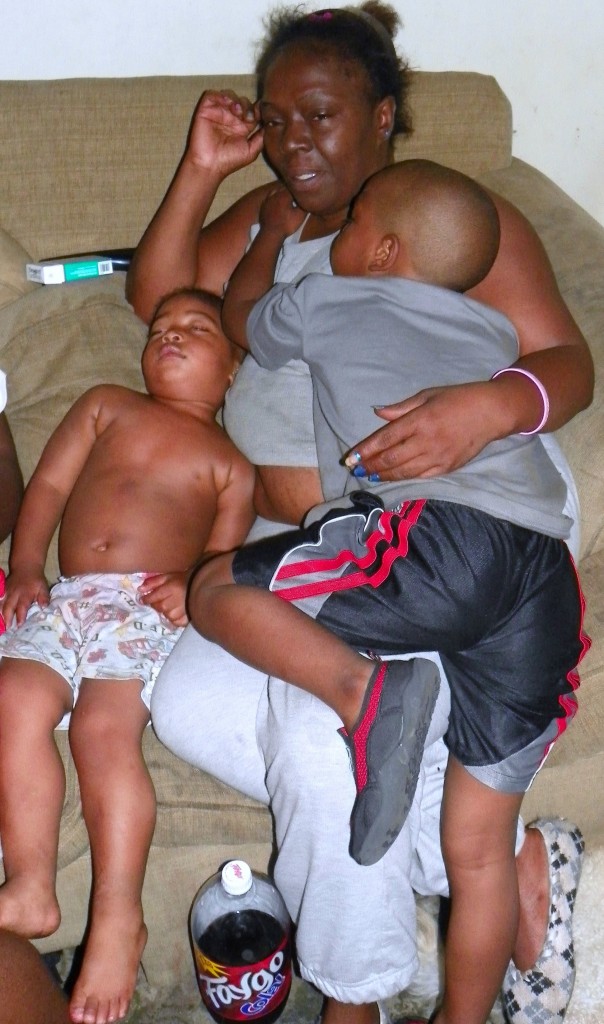
Mertilla Jones with her grandchildren after second police raid on her home in 2012, late the night of a hearing in Weekley’s case.
Sanders said “Chinaman” had only relayed that information to his brother.
Earlier, Fishman blamed Aiyana’s mother for letting her children stay in the same house with Owens after allegedly hearing of his involvement in the Blake killing. However, the transcript Fishman read clarified that it was not Dominika Stanley, but Dominique Simpson, the mother of Jones’ other children, allegedly on the porch. Simpson and her children were not in the house during the raid.
Aiyana’s cousin Vincent Ellis also testified June 6. He said he was in a front befroom when he heard commotion and noise, and started to go into the front room, but fell back into his room when he saw the flash of the grenade.
He said he heard another loud noise.
“The next thing I knew I was getting handcuffed,” Ellis said. “They asked where the guns are at.” He said the officers left him in the room. Fishman quizzed him about whether the officers said “guns” or “gun,” saying he told the grand jury they asked him, “Where’s the gun at?”
Fishman also asked about Ellis’ testimony to the grand jury that Mertilla Jones told him she was on the couch when Aiyana was shot.
Fishman had made an issue of that several times, since Jones on has said she fell to the floor when the grenade, which was found under the cushions of the couch by the evidence unit, went off.
He likely will grill her June 10 on her differing testimony. Jones was held for several days by police after watching her grandchild shot to death in front of her eyes, has been in poor health, and is likely still suffering from post-traumatic stress syndrome.
Members of Aiyana’s large extended family from both her mother’s and father’s side have attended the trial every day and expressed anger about evident attempts to blame the child’s death on people in the family.
“We want justice and we are going to get justice, and we want peace,” Dominika Stanley’s father Jimmie Stanley said during a break. “Aiyana was our loved one, and she has a very large family. She was my heart. I have her photos all over my house. When she would see me, even if she was with her grandma, she would come running to me.”
MORE OBSERVERS ASKING IF DETROIT’S ‘PARAMILITARY’ POLICE TACTICS GO TOO FAR
G.W. Schulz Homeland Security Reporter
CENTER FOR INVESTIGATIVE REPORTING
Jun 17, 2010
The military-style methods promoted by Detroit’s police chief have come under fire since officers shot and killed a small girl last month during a botched house raid that ignited public outrage. Chief Warren Evans took over the police department there last year and embarked on an aggressive campaign to win back the city from its stubbornly high violent-crime rate by among other things dispatching a so-called Special Response Team for everyday law enforcement activities.
The unit’s members dress in intimidating SWAT attire and carry submachine guns capable of unleashing an extraordinary 800 rounds per minute. At least that’s how their firepower is described on the website of “S.W.A.T.,” a television program hosted by the cable TV network A&E that showcases Detroit’s elite law enforcement team alongside two others in Dallas and Kansas City.
Elevated Risk previously asked whether the tragedy that exacerbated already deep fissures in Detroit between the black community and police also showed that local law enforcement in the United States had become overly militarized since Sept. 11. Time magazine answered that question in part by later reporting that the techniques Evans preferred for turning around Detroit were backfiring and Mayor Dave Bing had publicly declared the city would be “reigning him in.” . . . .
The police department’s leadership is now under a microscope following last month’s killing. The Detroit Free Press on June 6 reported in depth on another unit in the agency known as the Mobile Strike Force that openly turns even the smallest infractions – including jaywalking and loitering – into a search for drugs and weapons.
“In a city where an average of three people are shot every day,” the paper wrote, “Chief Warren Evans said the only way to combat guns is to get the illegal ones off the street. If that means stopping people breaking minor laws, he said, so be it.” Inevitably, that’s led critics to accuse the police of profiling citizens and relying on tactics better suited for Baghdad.
Meanwhile, the increased use in Detroit of its SWAT team parallels an ongoing trend nationally of police departments seeking to emulate the armed forces. Many officers are in fact reservists who fought in Iraq and Afghanistan. A flood of federal homeland security grants awarded by the billions since 2001 has further encouraged this new look of local law enforcement, enabling police agencies to buy armored assault vehicles, muscle-bound RVs known as incident-command trucks, beefy tactical body armor and battering rams.
As part of our months-long project examining homeland security in the United States, the Center for Investigative Reporting has seen community after community snap up such special tactics gear amid thousands of pages of grant spending records reviewed – night-vision binoculars, ballistic helmets, “under-door remote viewing” devices, material for outfitting snipers, bullet-proof entry shields and much more. (Attempts to learn about Michigan’s purchases stalled after the state police demanded over $1,000 in fees to process an open-government request.)
The man identified as having fired the bullet that killed young Aiyana Jones during a “no-knock” raid, Officer Joseph Weekley, still appeared on the website of A&E’s “S.W.A.T.” when Elevated Risk first wrote about the subject May 26. He continues to be featured on the site today. Weekley poses grim-faced in the photo and handles a hefty-barreled “multi-launcher” that shoots “less-lethal rounds” designed to halt unruly crowds or suspects without anyone getting killed. He’s a lead driver of the unit’s armored personnel carrier, the site says.
To some degree the 9/11 attacks only added fuel to a movement in policing that was already underway. But it’s now influenced heavily by the rhetoric of the war on terror and a perception in local police circles that the world is growing more unstable every day, even as crime in most corners of America drops to historic lows. These revolutionary changes in American law enforcement could have unintended consequences, Time says:
Detroit is not the only city to go the paramilitary route. Since the 1980s drug war, experts say, many local police departments have developed such units, often with surplus U.S. military gear. Initially, the units responded to hostage situations. Increasingly, they’re used proactively to search for illegal contraband, like guns and drugs, says Peter Kraska, professor of criminal justice at Eastern Kentucky University and author of Militarizing the American Criminal Justice System. Local police have a fundamental mission: to use the minimum amount of force to bring criminals to justice. That’s a very different mission from that of the military: to destroy the enemy.
Detroit also isn’t the only city where special weapons and tactics squads are being scrutinized for their conduct. Just this week in Columbus, Ohio, city leaders announced that they wanted to know more about a mask-wearing, non-uniformed group of local police officers who leaped out of unmarked vans during a traffic stop. Police searched the car and its two occupants explaining later that they believed it was stolen. But the driver reportedly turned out to be a teenage boy who’d just picked up his father from work during the early morning hours of May 7. The youth’s pants were allegedly pulled down during a search for drugs and weapons.
Officers present were later identified as part of the local Strategic Response Bureau, which, according to the Columbus Dispatch, “often operates undercover to gather intelligence, investigate gangs and handle other special operations.” At the time, they were “dressed in black fatigues, and some wore masks. Neither father nor son saw badges, but one of the men wore a ball cap with the word police.” The incident is also being investigated by internal affairs, the Dispatch reports.

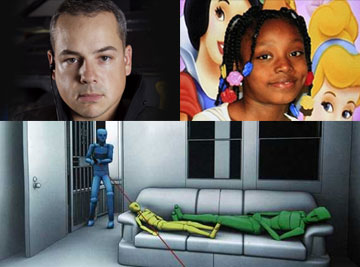
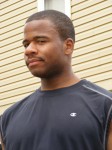
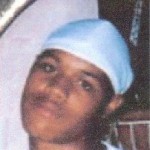
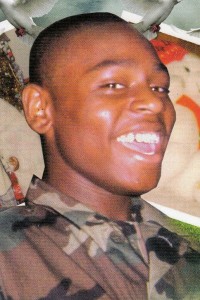


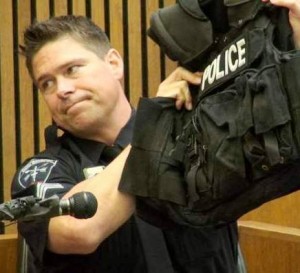

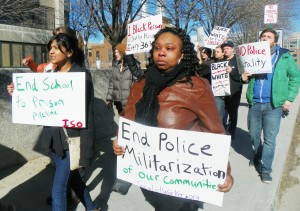
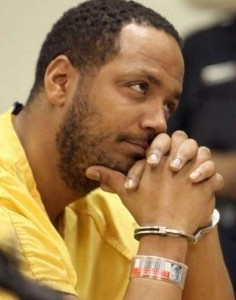

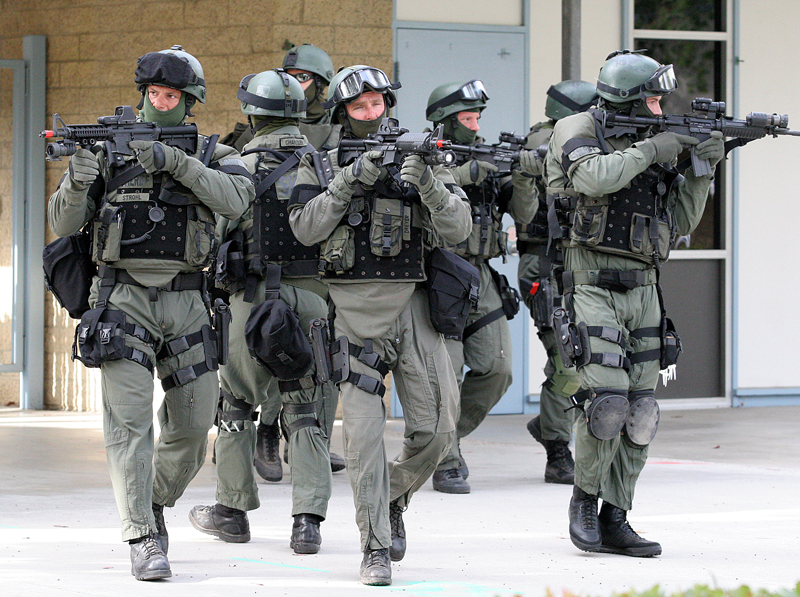




It’s truly a great and useful piece of info. I’m happy that you shared this helpful info with us. Please stay us informed like this. Thank you for sharing.